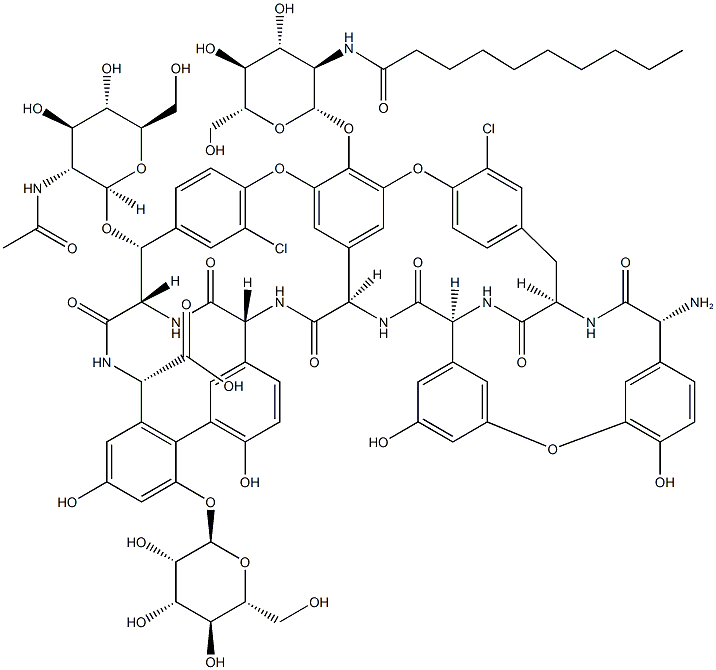Uses
Teicoplanin A2-3 is an antibiotic produced by Actinoplanes teichomyceticus.
Uses
Teicoplanin A2-3 is a major analogue of a family of lipoglycopeptides produced by Actinoplanes teichomyceticus. Teicoplanins possess potent broad spectrum antibiotic activity against Gram positive bacteria, including MRSA and E. faecalis.
Definition
ChEBI: A teicoplanin A2 that has decanoyl as the variable N-acyl group.
Biological Activity
teicoplanin a2-3 is a major component of the teicoplanin complex [1-3].teicoplanins, lipoglycopeptide antibiotics, are glycopeptide antibiotics produced by a. teichomyceticus that are broadly effective against gram-positive bacteria in vitro. teicoplanins consist of five major components (a2-1, a2-2, a2-3, a2-4 and a2-5), one hydrolysis component (a3-1), and four minor components (rs-1, rs-2, rs-3, rs-4) [1]. teicoplanins have been recently used for the treatment of multitudinous aerobic and anaerobic gram-positive infections. teicoplanins have been rapidly and extensively absorbed from the peritoneal cavity and muscle, but very poorly absorbed from the gastrointestinal tract [2]. teicoplanin is highly bound in plasma to albumin and in tissues. both renal and nonrenal mechanisms have been implicated in the elimination of the drug. for at least after one day administration, the concentrations of teicoplanin in serum and urine exceeded the mic ranging from 0.02-2 μg/ml on many pathogenic organisms [3].
References
[1] bernareggi a, borghi a, borgonovi m, et al. teicoplanin metabolism in humans[j]. antimicrobial agents and chemotherapy, 1992, 36(8): 1744-1749.
[2] rowland m. clinical pharmacokinetics of teicoplanin[j]. clinical pharmacokinetics, 1990, 18(3): 184-209.
[3] traina g l, bonati m. pharmacokinetics of teicoplanin in man after intravenous administration[j]. journal of pharmacokinetics and pharmacodynamics, 1984, 12(2): 119-128.
